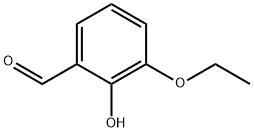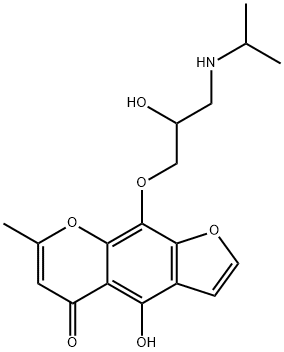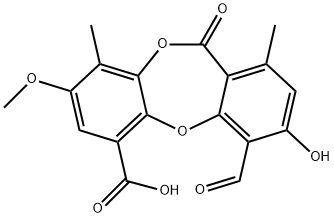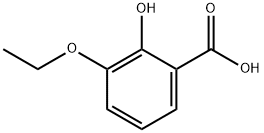PRODUCT Properties
| Melting point: | 66-68 °C (lit.) |
| Boiling point: | 263-264 °C (lit.) |
| Density | 1.1097 (rough estimate) |
| refractive index | 1.4500 (estimate) |
| Flash point: | 263-264°C |
| storage temp. | under inert gas (nitrogen or Argon) at 2-8°C |
| form | powder to crystal |
| pka | 8.30±0.10(Predicted) |
| color | Light yellow to Brown to Dark green |
| Water Solubility | Soluble in cold water. Insoluble in methanol, ethanol, acetone and acetonitrile |
| Sensitive | Air Sensitive |
| InChI | InChI=1S/C9H10O3/c1-2-12-8-5-3-4-7(6-10)9(8)11/h3-6,11H,2H2,1H3 |
| InChIKey | OFQBYHLLIJGMNP-UHFFFAOYSA-N |
| SMILES | C(=O)C1=CC=CC(OCC)=C1O |
| CAS DataBase Reference | 492-88-6(CAS DataBase Reference) |
| EPA Substance Registry System | Benzaldehyde, 3-ethoxy-2-hydroxy- (492-88-6) |
Description and Uses
3-ethoxysalicylaldehyde is also known as o-ethyl vanillin. 3-ethoxysalicylaldehyde often appears as a by-product in the production process of ethyl vanillin, which gradually becomes an alternative to vanillin since it possesses a flavor and odor approximately 3 ~ 4 times as intense as vanillin. In recent years, it has been discovered that 3-ethoxysalicylaldehyde possesses potential applications in optical utilization, biology, catalysis, and corrosion inhibition. Moreover, 3-ethoxysalicyaldehyde has been applied in various medicinal applications[1].
3-Ethoxysalicylaldehyde was used in the preparation of:
- Schiff base ligand via condensation with trans-1,2-diaminocyclohexane
- substituted salen-type Schiff base ligands
- a new Schiff base, 2-ethoxy-6-[(3-methylaminopropylimino)methyl]phenol, via reaction with N-methylpropane-1,3-diamine
Safety
| Symbol(GHS) |  GHS07 |
| Signal word | Warning |
| Hazard statements | H315-H319-H335 |
| Precautionary statements | P261-P264-P271-P280-P302+P352-P305+P351+P338 |
| Hazard Codes | Xi |
| Risk Statements | 36/37/38 |
| Safety Statements | 26-36 |
| WGK Germany | 3 |
| RTECS | CU6123000 |
| TSCA | Yes |
| HS Code | 29124990 |
| Toxicity | LD50 ipr-mus: 360 mg/kg COREAF 238,2576,54 |





